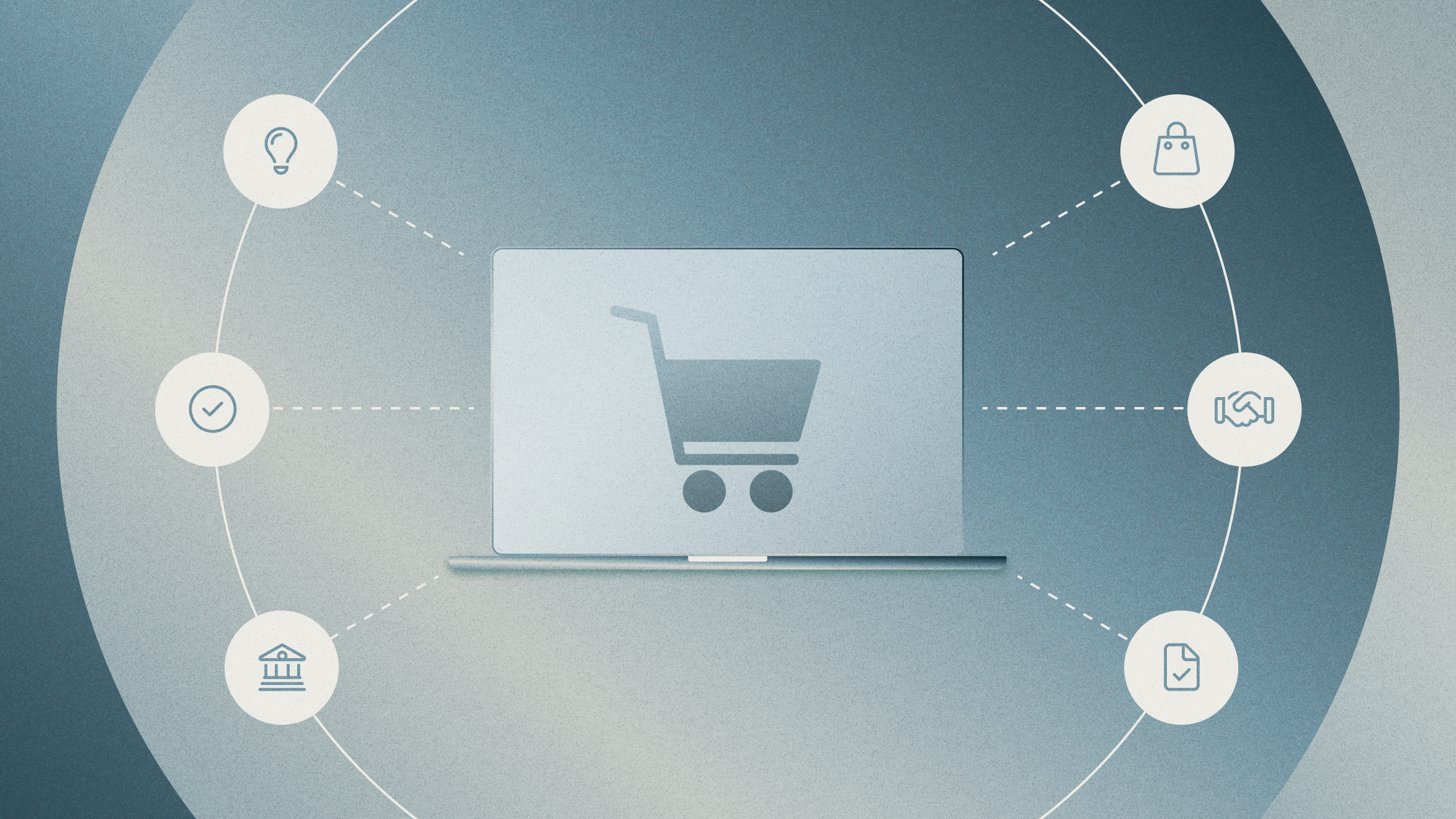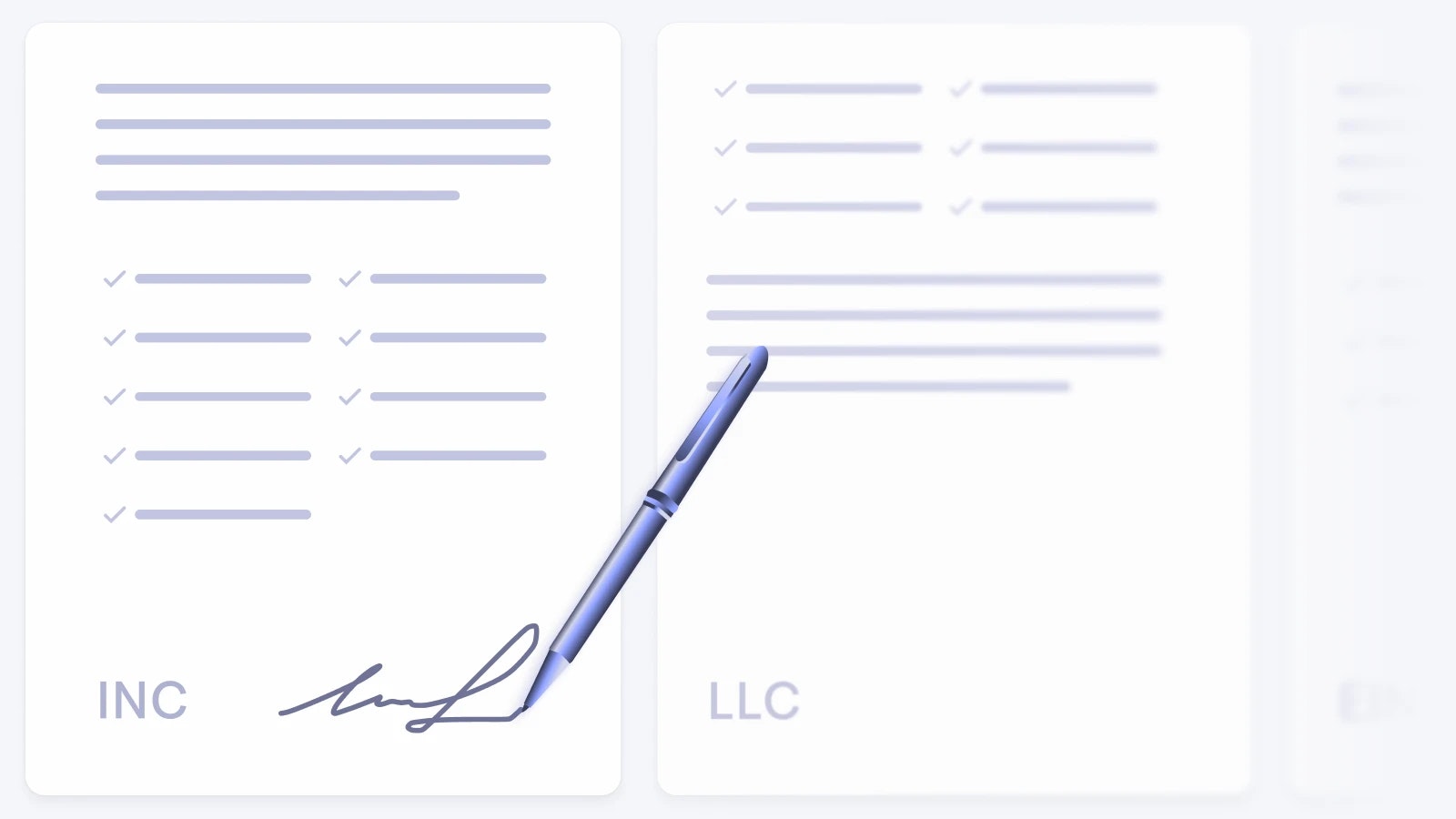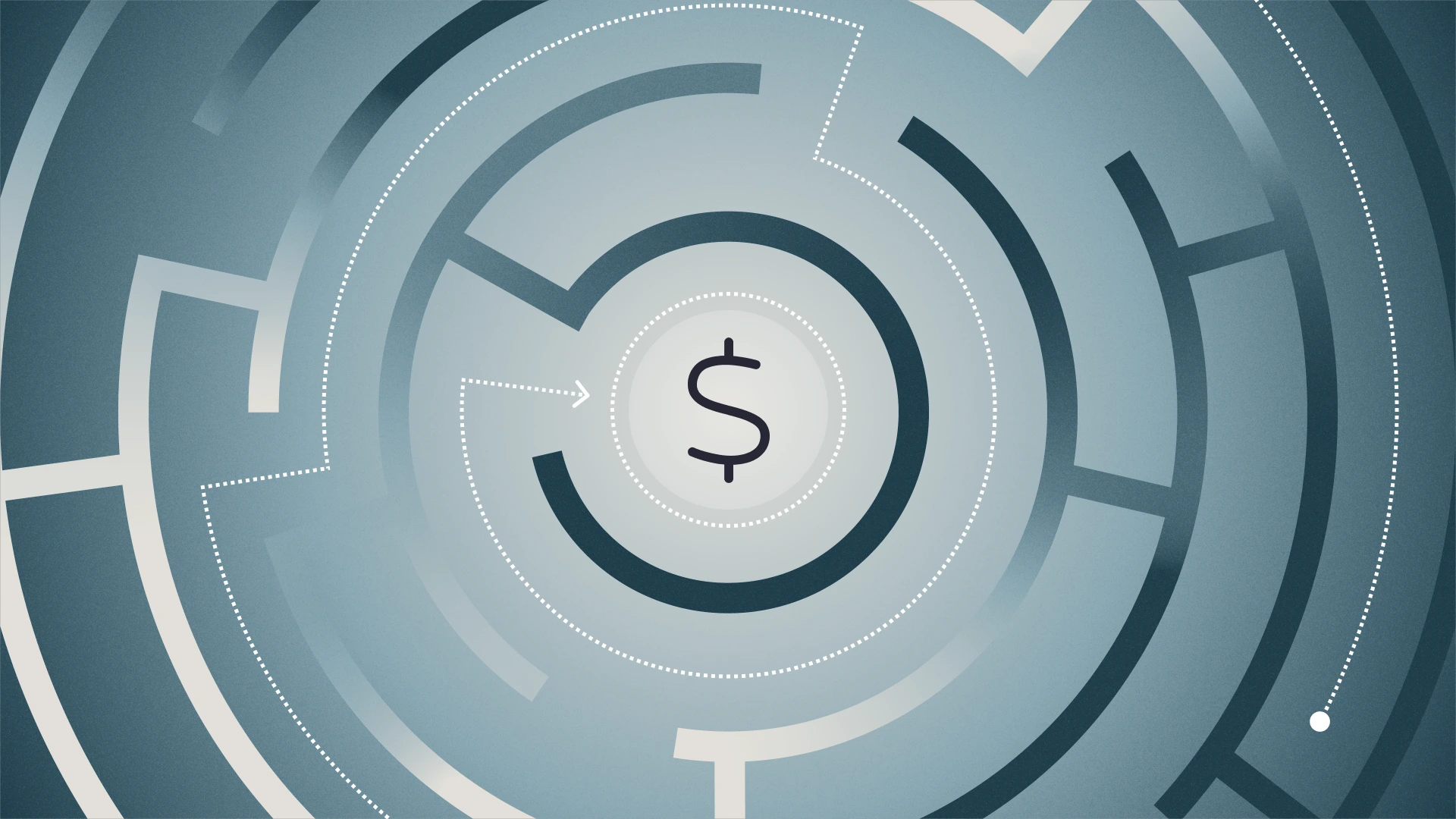Ecommerce Founder Guide: Getting started

Hi, I’m Kemal.
I co-founded an ecommerce business, Mango Puzzles, during the pandemic with my partner, Svet.
Three years ago, I joined Mercury, and today I work with ecommerce entrepreneurs of all types, supporting them with the financial tools they need to grow their businesses the right way.
In this five-part series, we’ll cover everything you need to know to launch and grow an ecommerce business. First, we’ll explain what you need to know to get started. Then, we’ll discuss financial planning and pricing, building an online brand, product sourcing and fulfillment, and lastly, turning your customers into fans.
The ecommerce market opportunity
The ecommerce industry continues to experience rapid growth and transformation, projected to reach nearly $7 trillion in 2025 while growing at an annual growth rate (CAGR) of 7.8% — that’s double the rate of brick-and-mortar retail stores.
With the help of modern storefront platforms, easy-to-use finance and banking software, and (maybe) a digitized fulfillment network, you can find plenty of opportunities to grow your business with fewer resources than ever — and compete with established retailers.
The emergence of these new tools and technologies has created a great environment for launching new ecommerce ventures. The key here is approaching this opportunity with the right strategies (and the benefit of hindsight, which is why I’m excited to be writing this).
Finding your niche and validating your idea
My co-founder, Svet, and I met during the Covid lockdown. With everyone at home, puzzle sales were going through the roof — it was hard to even get your hands on one. And we were getting completely obsessed with doing them ourselves. We knew that there was a deeper business opportunity here.
Once stores were open, we went around and started picking up different jigsaw puzzles, opening them up to see how the whole experience felt. We started asking ourselves, what do we like about it? What do we not like about it? What could we make that would stand apart?
Discovering your market opportunity
Before we ever touched product design or branding, we needed to understand the market. That meant figuring out what problem we were solving, who it was for, and whether people actually cared about it. Here’s how we approached it.
- Start with your expertise and interests. I still remember it was 2 a.m., and I was brushing my teeth while looking over a puzzle Svet and I were trying to put together, completely obsessed with this product.
- Research existing solutions and identify gaps. We knew the market for puzzles was hot at the time, and research showed us other benefits like how meditative they were — something we thought everyone needed during the stressful time of the pandemic.
- Talk to potential customers early and often. The first step for Mango Puzzles was to start discussing it with various relevant connections we’d made throughout the years, asking questions, and being curious about what next steps we should take.
- Test your concept before making major investments. We wanted to test small-scale experiments before committing significant resources, so we set up pre-orders, which helped fund our first inventory order and created some interest and hype before we launched the product.
Your concept doesn’t have to be perfect out of the gate. What matters is getting enough signal to know you’re on the right track, then using that feedback to iterate and improve before you go all in.
Developing your value proposition
Your value proposition should articulate the unique benefit your brand and product provides to customers. For Mango Puzzles, our mantra, “pieces over pixels,” was short, yet resonated with people at a time when we were all cooped up and spending too much time on our screens.
Your value proposition can also be more detailed, like the examples below:
- “We help busy professionals eat better at home with chef-made frozen meals that heat in under 8 minutes.”
- “We help sensitive-skin customers build a routine they can trust with dermatologist-tested products made from five ingredients or fewer.”
- “We help men 6’2” and taller find clothes that actually fit without tailoring or guesswork.”
Writing out both a detailed (we help “x” do “y”) and a branded (“pieces over pixels”) value proposition can help you align the decisions you’ll make with your purpose as a company. This exercise is just as important for your own clarity as it is for your customers.
Building your business foundation
When you’re getting started, it can be easy to lose yourself in the creative work and building the product. But it’s important to keep in mind your finances, the business structure, and all those other operational components that you need to set up.
Once you’ve validated your concept, it’s time to formalize your business and establish the right systems to support your growth.
Choosing your business model
Ecommerce businesses can take a variety of shapes, and understanding the different models available will help you choose the one that best aligns with your goals, resources, and risk tolerance.
At a high level, most ecommerce businesses follow one (or a combination) of the following models:
- Direct-to-consumer (DTC): You manufacture or source your own product and sell it directly to customers through your website. This model gives you full control over branding, pricing, and customer experience, but also means you’re responsible for everything from fulfillment to support.
- Dropshipping: You sell products through your online store, but a third-party supplier handles inventory and shipping. You don’t need to buy or store inventory upfront, but margins are typically lower, and you have less control over fulfillment quality.
- Marketplace selling: You sell on platforms like Amazon, Etsy, or eBay. These channels give you built-in traffic and tools, but come with fees and limited branding flexibility.
- Subscription-based ecommerce: You offer products on a recurring basis (e.g., monthly deliveries of consumables or curated boxes). This model provides more predictable revenue but can be operationally complex.
- Print-on-demand: Products like apparel, posters, and accessories are printed and shipped as orders come in. No inventory required, but limited to certain product types and dependent on third-party providers.
- Wholesale or B2B ecommerce: You sell in bulk to other businesses rather than directly to consumers. This often involves different pricing models, longer sales cycles, and specialized logistics.
After comparing some of these options, Svet and I decided that the DTC business model was the best for us. At our scale when we started out, we kept it so direct-to-consumer that we stored inventory in our apartment, sold them through our own Shopify store, and mailed things out ourselves.
Setting up your legal structure
The way you legally structure your business impacts everything from liability protection to tax obligations and growth options — so it’s important to get informed and be thoughtful about this. Keep in mind that your options and their implications may vary depending on where you live.
The most common options if you’re building your company in the U.S. are:
Business Structure | Setup Cost & Tools | Tax Treatment | Liability Protection |
|---|---|---|---|
Sole Proprietorship | Minimal cost, no formal setup required | Profits taxed as personal income | None — personal assets not protected |
Limited Liability Company (LLC) | $50–200 depending on state; tools like Doola, Bizee make setup fast | Pass-through by default, or optional S-Corp election | Yes — separates personal and business |
Corporation | Higher cost & complexity; services like Stripe Atlas, Clerky streamline process | May face double taxation (profits and dividends) | Strongest protection |
Generally, an LLC can be an ideal entity due to its simple nature and relatively low administrative burden, while a corporation is preferred if you plan to raise capital from investors and build a scalable business. When you’re ready to set up your entity, it’s a good idea to consult a tax professional to minimize the chances that you’ll have to reverse mistakes later on.
Looking for help setting up your business?

Registering your business name
When you register your business entity with the state, you’ll need a name. Here’s a simple three-step process to help you find one that’s both available and aligned with your business:
- Brainstorm names. Start with ideas that clearly communicate what you do and are easy to pronounce. Tools like ChatGPT can help generate options and variations.
- Check availability. Make sure your name is available across both legal and marketing channels. That means:
- Checking your state’s business registry
- Searching the USPTO for trademark conflicts
- Verifying domain name availability
- Searching social media handles and other online footprints
As a rule of thumb, steer clear of names that sound similar to competitors, especially in your industry. Trademark laws are mostly about whether customers might be confused between two businesses, so avoid overlap, and you should be fine.
3. Register your name and business. Once you’ve picked a name, register your business entity with your state. You can do this through your state’s official site or a third-party platform. You may also want to:
- File a “doing business as” (DBA) name if you plan to operate under something different from your legal name.
- Register a trademark, especially if your name is distinctive or brand-critical
Both of these steps are typically inexpensive and can usually be done online. If you’re unsure about trademark issues, consider consulting a trademark attorney.
How Mercury can help
Establishing a solid financial foundation is crucial for long-term success. We learned this lesson firsthand while attempting to work with banking and finance partners who didn’t understand ecommerce or the startup world.
One piece of advice I’d give to new ecommerce founders is to set your banking and financial systems up on day one, and use a company that understands the needs of a startup — this is unlikely to be a legacy financial institution.
Opening a business account through Mercury
Mercury offers banking solutions specifically designed for modern businesses, with features that address the unique needs of ecommerce companies:
- No monthly fees or minimum balance requirements
- FDIC insurance up to $5M through their partner banks use of sweep networks
- Free USD domestic and international wires
- Cashback credit card with low qualifying minimums
- API access for custom integrations with ecommerce platforms
As Svet and I learned, prioritizing great capabilities and ease of use with critical financial tools is very important — you want to have the time to work on growing your business, not spend hours figuring out your financial transactions.
Leveraging financial workflows
Running an ecommerce business means juggling more than just product sales — you’ve got to manage inventory purchases, vendor payments, platform fees, and fluctuating cash flow. Mercury makes it easier by bringing key financial workflows into one clean, connected system.
Whether you’re fulfilling orders from your living room or scaling with a third-party logistics (3PL) provider, Mercury helps you stay in control without adding extra complexity.
Here’s what Mercury’s platform includes:
- API access for custom integrations and automated workflows
- Built-in workflows for bill pay, invoicing, and accounting
- AI-powered bill pay with duplicate detection and multi-layered approvals
- Integrated invoicing with credit card, ACH, Apple Pay, and Google Pay support
- Accounting integrations with QuickBooks and Xero
- Expense tools with receipt matching and policy enforcement
- Payroll accounts to streamline employee and contractor payments
- Custom permissions and real-time financial visibility for teams
Learn more about how ecommerce companies can use Mercury.
Once you’ve discovered your market opportunity, validated your idea, and set up your business foundations, it’s time to make sure you’re able to run a profitable and self-sustaining business.
Next up in our series, we’ll explain what you need to know in order to establish sound financials for your ecommerce business.



